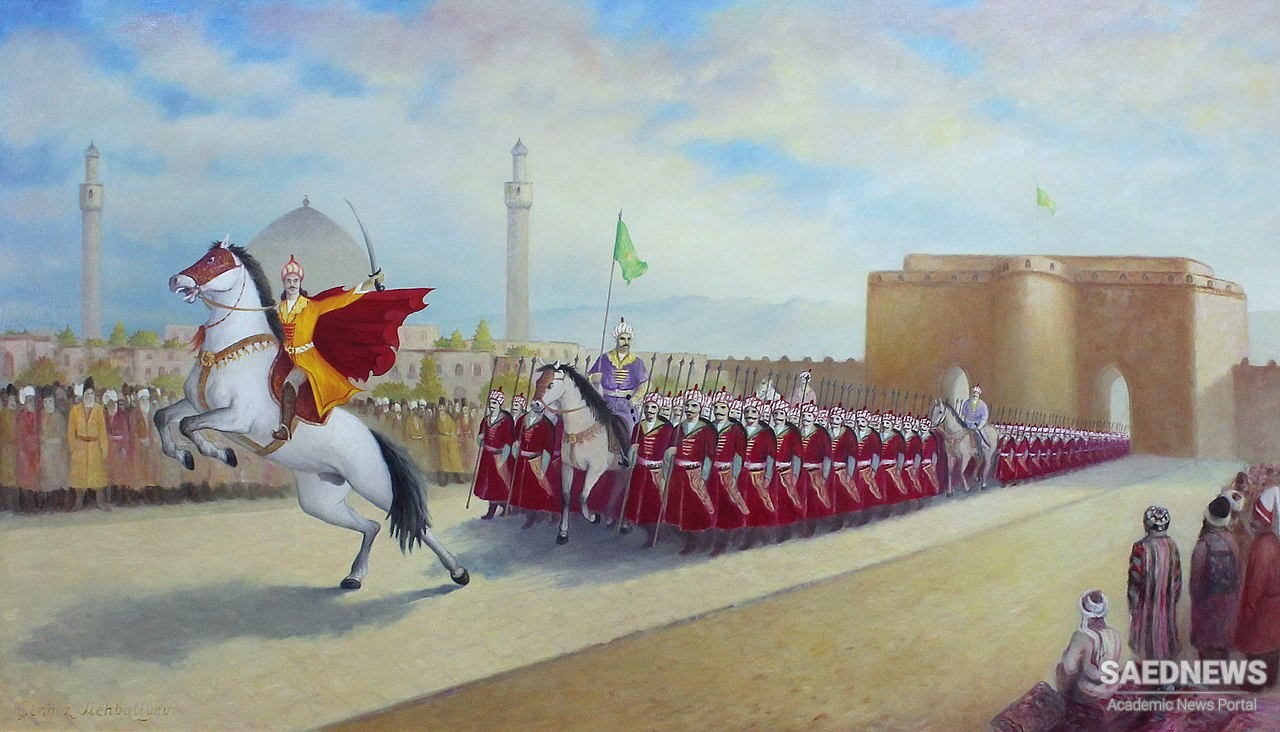We must not underestimate the importance for Ismail's religious beliefs of his stay in Lahljan which followed his escape from the soldiers of Sultan Rustam Aq Quyunlu. From 899/1494 onwards he spent five years there under the protection of Karkiya Mlrza 'Ali, the then ruler of Gilan, who claimed to be a descendant of the Caliph 'Ali and was a Shia. He appointed one of the theologians in his kingdom, one Shams al-Dln Lahljl, to be Ismail's teacher. This man must have influenced his pupil to a certain extent, since he occurs again, immediately after Isma'il ascended the throne, as sadr, occupying the highest religious office in the realm; later we see him as tutor to the princes at court. There is scarcely any doubt but that he was a Shia. And this would be certain if he should be identical with a disciple of the same name of Sayyid Muhammad Nurbakhsh, who along with Muhammad b. Falah, the famous Mahdl, had been trained by the well-known Shl'I theologian Ahmad b. Fahd al-Hilll. Whatever the truth about the religion of his forebears, where Ismil himself is concerned we already have a valid explanation of the origin of his Shia faith in the few years he spent with his tutor in Lahljan. This factor lends credence to the suggestion that his religious attitude was determined by inner conviction. His collection of Turkish poems mentioned above provides an insight into his religious ideas. The Shia character of these verses is unmistakable. But clearly what we have here is not something that can be related to the High Shl'a as delineated in Shl'I theology, but rather rabid fanaticism. The worship of 'Ali expressed here betrays an extremism which cannot be reconciled with the normal Shia doctrine. 'AH is named before the Prophet Muhammad and placed on a level with God. In these lines we see perhaps an unrestrained exaggeration of certain Shia ideas which also occur incipiently in Folk Islam. It is also significant that the particularly extreme passages are only to be found in the oldest extant versions of the collection: later manuscripts do not contain them, presumably because they derive from a version expurgated under the influence of Shia theologians. Anyway the creed which Isma'il avowed on coming to power could not have been the Shl'a of the theologians, no matter of what school. Even if he himself, lacking clear religious ideas, envisaged no more than changing from the Sunna to the Shia, his poems proclaim very different notions. Nor can they be interpreted as a gradual transition from Folk Islam to the High Shl'a. If one pursues Isma'Il's thought to its conclusion and relates it to his political intentions, one realises that he is proclaiming a Shia theocracy with himself at its head as a god-king (Source: The Cambridge History of Iran, vol. 6).


 Shah Ismail: the Sufi-Poet-King
Shah Ismail: the Sufi-Poet-King














































